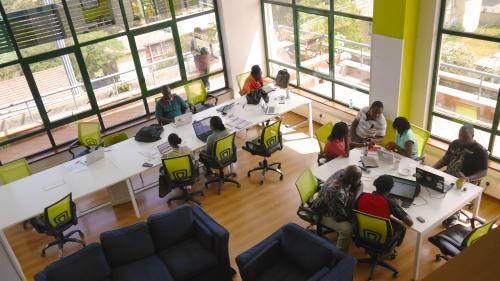The UN’s theme for this year’s International Women’s Day, “DigitALL: Innovation and technology for gender equality,” highlights the impact of a growing digital gender divide on social and economic inequalities.
Girls and women are consistently less likely to have access to information communication technologies, such as the internet, cell phones, and financial services. An estimated 43 percent of women compared to 38 percent of men around the world do not have access to the internet. The gendered nature of this divide is especially stark in some regions across the Global South. For example, in South Asia women are 36 percent less likely than men to use the internet. Similar gender gaps also exist in mobile internet usage in South Asia and sub-Saharan Africa* has some of the highest gender gaps in mobile internet usage—where women are 41 percent and 37 percent less likely than men to use mobile internet, respectively, indicating that mobile internet adoption among men has continued to increase while women’s has not.
Bridging the digital gender gap is vital not only from an economic standpoint—impacting, for example, women’s economic empowerment and labor force participation at a time when an estimated 90 percent of jobs have a digital component—but is also a key tenet for building more inclusive societies where women, girls, and gender non-conforming people have access to health, education, and other rights put forward in the UN’s 2030 SDG Agenda.
Digital inclusion has the potential to make significant strides toward gender equality, yet there are risks associated with focusing on technical solutions that limit digital inclusion to questions of access. Rather, we must situate our efforts within the current political economy of gender and technology, in which gendered social norms, global patriarchal institutions, and other socio-economic structures act as significant barriers in bridging this divide.
The digital sphere can exacerbate inequalities of the analog world
Research demonstrates that existing gender, racial, and economic inequalities are more likely to be replicated in the digital sphere. These inequalities and the parallel consolidation of intellectual monopoly power of BigTech in the Global North are not an accident. One major example of how new technologies can reinforce inequalities is AI, which can increase gender bias, hinder personal privacy, and damage political discourse, especially impacting racialized women and gender non-conforming people. Similarly, automation has the potential to accelerate racism, patriarchy, and discrimination, especially against Black peoples.
In addition, the gendered nature of digital experiences remains a stumbling block. Research across continents—including by the Digital Rights Foundation, based in Pakistan, and by Luchadoras, a local organization in Mexico—consistently details the scope of online violence and harassment against women and gender non-conforming people, highlighting the need for legal and regulatory mechanisms to accompany questions of digital access. Digital governance from a gender-sensitive and intersectional lens is a key pillar in creating more inclusive digital technologies.
A systemic focus on digital technologies for gender equality has the unique potential of not only expanding access and creating intersectoral linkages, but to also be gender transformative. At a historic moment when digital technologies are increasingly being deployed for authoritarian visions, it is vital to harness their power—with an eye toward addressing inequalities and overlapping systems of discrimination.
Note: For this blog, we acknowledge the controversial history of the term “sub-Saharan” and how geographically misleading it is. As defined by Herbert Ekwe-Ekwe (2007), the term also reproduces anti-Black racism, linking Blackness to a specific location while blurring the ethnic composition of Northern Africa.








Commentary
Imagining a more digitally inclusive future on International Women’s Day
March 8, 2023